Bringing a Classic Yacht Back to Life
Cynara is a two-masted, gaff-rigged classic wooden sailing yacht, with a total length of 96 feet (29.26m), a total width of 18.7 feet (5.69m), and a total tonnage of 73t. She boasts five sails, including a flying jib. She was first launched into the waters off the UK’s Southampton port in 1927, after construction by one of Britain’s premier shipbuilders.
Over the next 90 years, her graceful form plied the seas of the Atlantic, the Mediterranean, the Caribbean, and the Pacific, adding her years and adventures to the history of sailing.
We undertook a full restoration in order to return this beautiful yacht to her former glory as a true “Lady of the Seas.” We hope this project not only extends her life over many more years to come, but provides a valuable asset to future generations of shipbuilders, sailors, and other yacht enthusiasts.
Message
from the Chairman

I believe there are special moments that can only be experienced standing on the deck of a ship, facing a sea breeze. I took on the mission of preserving Cynara, one of the world’s rare vintage yachts, so that the wind will continue to fill her sails.
The Cynara restoration project was able to use was able to use a large percentage of the original materials from her launch almost a century ago, and has breathed another century or more of life into this marvelous example of shipbuilding’s heydays. We have kept precise records of the craftsmanship and artisanal details that went into this work, as teaching materials in environmental and marine studies. Leaving the Cynara and her history in good shape for future generations is in accord with the policies of our Riviera Sustainability Projects, which are committed to the SDGs and a sustainable society.
Cynara was launched in England in 1927, and has been loved by a succession of owners prior to Riviera. I am extremely grateful for the opportunity to see her through the long restoration project, and to experience the work of the 50 craftsmen from all over the world. We wouldn’t have succeeded without them and their contribution. I would like to thank everyone who has supported us during the project.

Noboru Watanabe
Chairman and CEO
The Riviera Holdings Co., Ltd.
Cynara‘s Origins
Cynara is one of the last great pre-war cruising yachts to be restored. She was built in 1927, in an age when British shipyards were at the pinnacle of yacht building and design, and she is a living showcase of that period’s traditional skills and creativity. A testimony to her builders, and a superb piece of craftsmanship that has lasted over 90 years, her restoration is richly deserved.
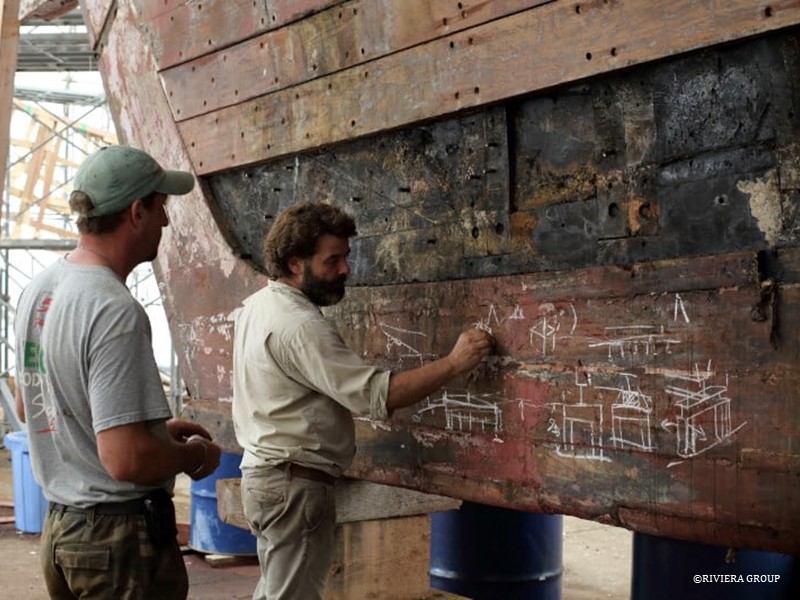
Cynara‘s Role as a Classic Yacht
Cynara is a classic yacht, a classification given to yachts that were built over 50 years ago. Classic yachts are important because they represent an era in history when yachts were built to last for many years and were maintained in true Bristol fashion–that is, conforming to the highest standards of seamanship. There is an elegance in design and construction that is very evident in every aspect of the yacht’s structure, and the workmanship is perfect from the largest piece of timber down to the smallest nail. The craftsmen were clearly proud of their skills even in areas that were never visible when completed.

The commitment and attention to detail shown by those shipbuilders of the past has been rewarded over the past 30 years, as huge efforts have been made by owners and crews to rescue, preserve, and restore these yachts, both to appreciate and enjoy their beauty and to make sure that future generations have the opportunity to understand them.
Cynara’s Design
Cynara was designed as an auxiliary ketch by Charles Nicholson, one of the most famous yacht designers of the first half of the twentieth century. Nicholson designed both racing and cruising boats, and Cynara was designed to be a fast cruising yacht with a relatively shoal draft that could sail into shallow estuaries and anchor close to the coastline.

Charles Nicholson had a reputation for designing safe and seaworthy boats that could sail quickly and efficiently, and despite her shallow draft, she has all the design elements of his most seaworthy creations. What we know of her history is that she was always fast and a great boat to sail on ocean voyages, even in the harshest weather conditions.
The splendid interior by the Campers & Nicholsons shipyard was designed for use in a bygone era. Before air conditioning, yachtsmen would spend very little time in their cabins below, instead preferring to live on deck underneath large awnings. The designers understood the needs of the yachtsmen and the relationship between sun, wind, and shade, and knew how to use the elements effectively to maximise their comfort. There are lessons to be learned today from close inspection into how parts of the yacht were designed, and it is only by understanding the thought behind their decisions that we are able to see the intelligence in their design concepts.

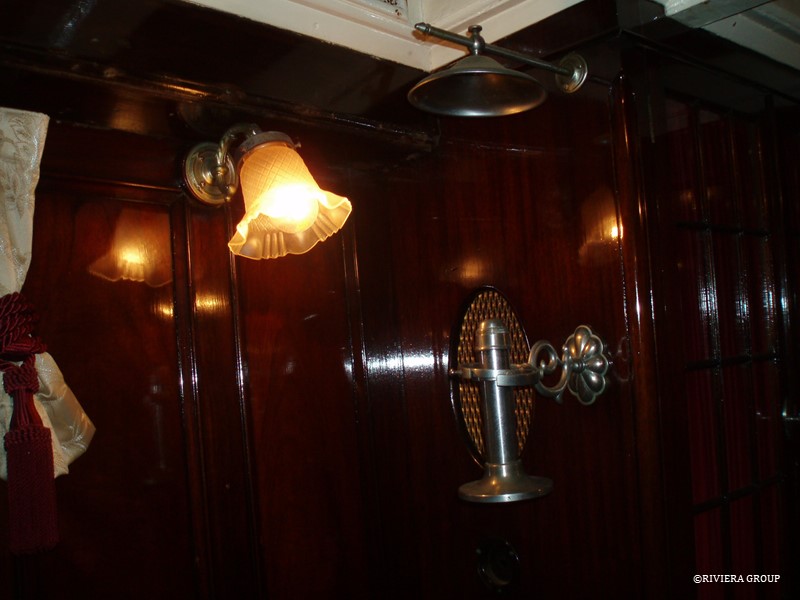
Cynara’s Restoration Materials
The Hull
The hull is the true skeleton and skin of the yacht, made up of the keel, frames, planks, and beams. Cynara’s hull frames are made out of seasoned White Oak, which had to be replaced with large quantities from England. The wood had to be seasoned before it was used, which meant reducing the moisture content to an acceptable level, a time-intensive effort.
The planking fastened outside the frames keeps the water out of the hull, and Cynara’s was made out of Burmese teak, which is increasingly rare. Luckily, most of the original planking was still usable and only a few needed to be replaced.

The Deck
The deck is where most of the crew and the guests spend their day. When the yacht is tied up or at anchor, the deck is covered with awnings and a table and chairs are put out for guests. The area forward of the mainmast is reserved for the crew, while the owner and guests use the aft area. When the yacht is sailing, the awnings are taken down and the whole deck is used for sailing. Cynara’s deck planking was entirely replaced with teak, after the installation of a marine plywood subdeck that added strength and made the yacht even more waterproof. The deck furniture is being restored in varnished teak, and all of the hardware is either painted steel or bronze.
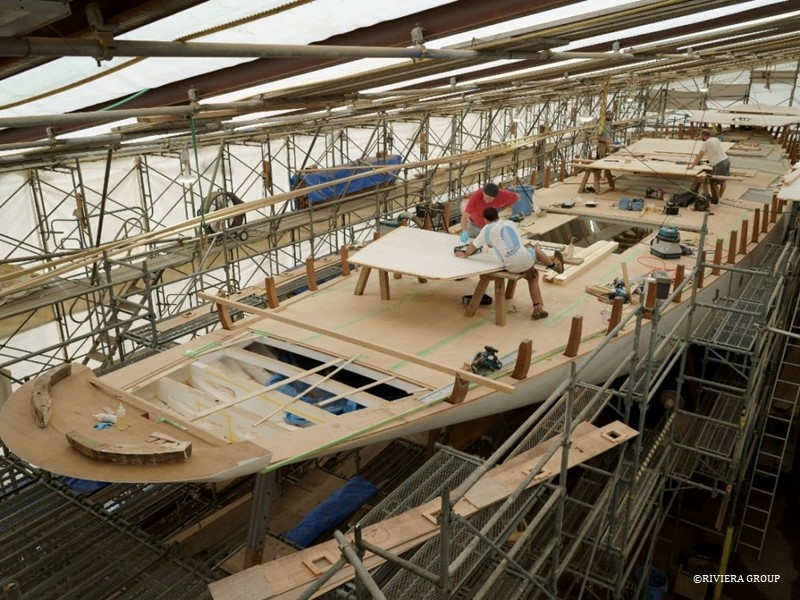
The Interior
Traditionally in classic yachts, the crew slept forward with a bulkhead or wall separating them from the main cabins. The accommodations for the owners and their guests, of course, were more luxurious and elegant. In this area there was usually no expense spared to furnish the rooms to the owners’ tastes. Cynara’s interior is largely intact, and is being carefully restored using as much of its original materials and design as possible. Most is done in mahogany which is traditionally richer in colour and texture than teak, and is frequently used in interior joinery because it is a stable wood. The mahogany is interspersed with white painted pine. The original pine floors have been replaced by oak and the fittings and switches are all nickel-plated brass.
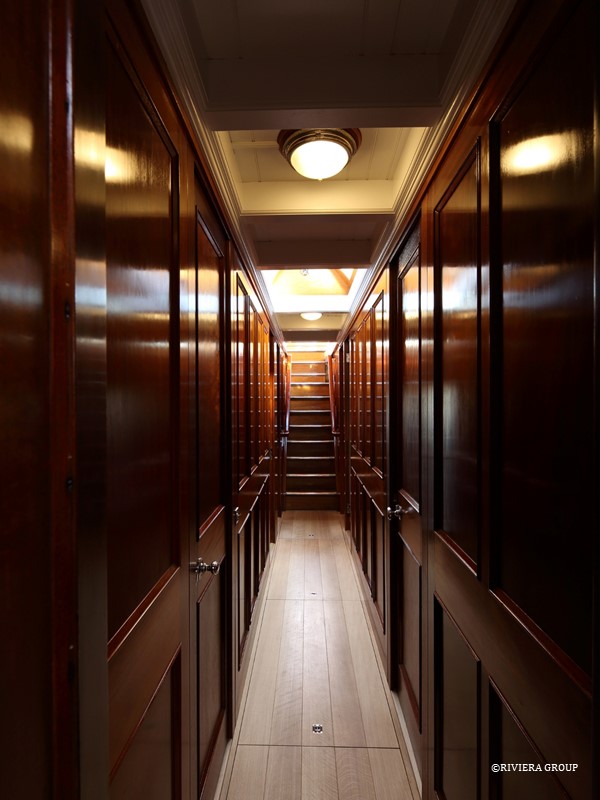
The Mast
Traditionally, masts were made of Columbian pine and spruce, providing strength and resilience, and Cynara’s restoration follows in this vein. Spruce, which is also used in making aircraft wings, is used for the booms and gaffs, the lighter spars that take the most strain.

The Rigging
The fittings of the Cynara are bronze and stainless steel. The wires are made up of seven strands of seven wires wound together, a traditional method that gives the wire strength and flexibility. It is important that the metals used in the wires are close together on the galvanic scale, and bronze and stainless steel make a good combination. When the sails are overpressed, the rigging acts as one big shock absorber, flexing and dissipating the stress before it reaches the hull.
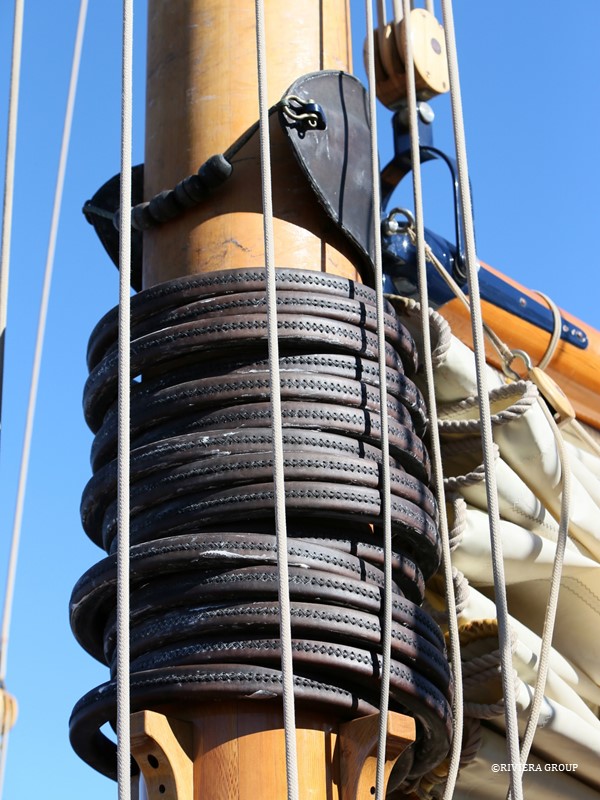

The Sails
The sails of the Cynara are made of dacron, using the traditional method of leathered edges to minimize stress on the material. The new sails are long lasting and easily maintained and repaired.
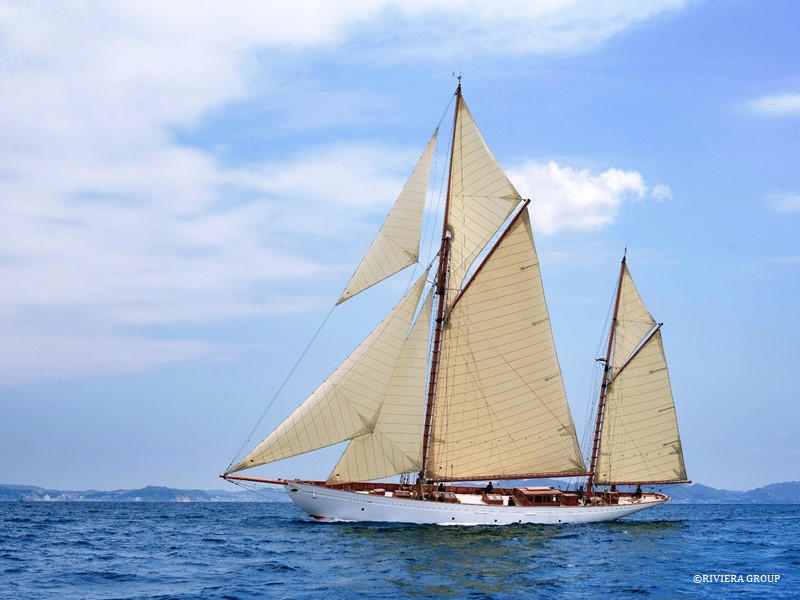
The Engine Room
An organized and well maintained engine room is fundamental to the proper functioning of a yacht. The original engine was replaced with a Yanmar diesel engine during its years in Japan, and this was totally restored by Yanmar Japan during the project, everything must be accessible, able to be checked and maintained on a regular basis. The fuel systems are stainless steel.
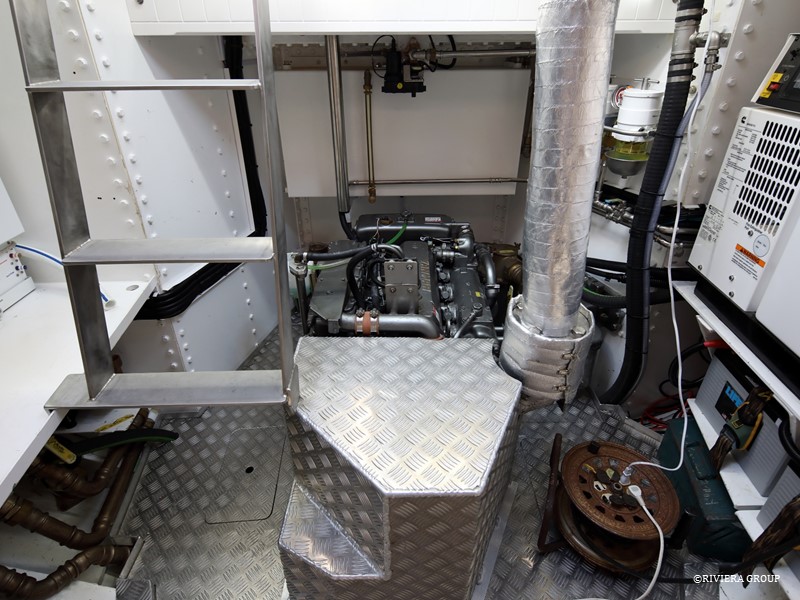
Text and photographs copyright © 2019
RIVIERA CO., LTD. All rights reserved.
Email : pr@riviera.co.jp

